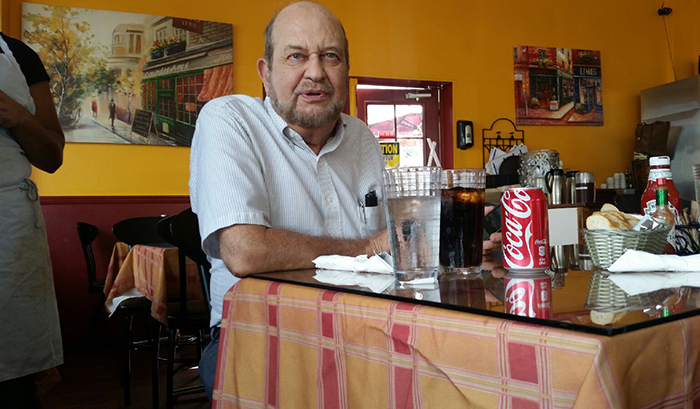A flood of lawsuits began within weeks after a huge, still-ongoing leak of natural gas arose in late October from a Southern California Gas Co. storage facility 1,200 feet above the Porter Ranch area in the northern reaches of the San Fernando Valley.
There is a class action on behalf of many residents and a suit by the city of Los Angeles, plus individual actions by homeowners.
These suits claim negligence, ultra-hazardous activity and “inverse condemnation” of property, among other items. No fatalities, but the legal language is akin nevertheless to charges made against Pacific Gas & Electric Co. after the 2010 gas pipeline explosion in the San Francisco suburb of San Bruno, which killed eight persons and devastated dozens of homes.
Too soon to say SoCal Gas was negligent because no one actually has seen the source of the leak, which still spreads noxious odors and greenhouse gases for miles around. (The Aliso Canyon storage site is one mile from the edge of upscale Porter Ranch.)
Suspected cause is crumbled or cracked concrete in a well hundreds of feet underground, says the state Public Utilities Commission (PUC).
Whatever the cause, this is unquestionably a disaster, even though Gov. Brown – whose sister is a director of SoCal Gas’s parent company, Sempra Energy – has yet to call it one.
The utility still has not deployed the most modern inspection techniques for checking on its other wells. It seeks approval from the PUC to charge customers $30 million a year for six years to use a state-of-the-art “Storage Integrity Management Program,” but won’t say why it doesn’t deploy the new technique now, rather than awaiting approval for the charge as part of a pending general rate case.
There also is the late action of the state’s Division of Oil, Gas and Geothermal Resources (known as DOGGR), which on Nov. 18 – four weeks after the leak began – issued an emergency order compelling action to plug it, explaining ironically that it “didn’t want SoCal Gas and its contractors to lose time…”
Is this the equivalent of San Bruno, which did not displace nearly as many persons, but for which PG&E still faces criminal charges and was assessed a $1.6 billion fine?
Leak Passed Muster
Did SoCal Gas react too slowly? The company says it observes all four of its storage fields daily and checks well pressure weekly. “The leaking well had passed its most recent inspection,” said a spokeswoman.
The utility is relocating residents who want a temporary move. More than 4,000 families have applied. At least 2,100 resettled in various housing types (sometimes it’s a single hotel room for a large family). Not until Christmas week did SoCal Gas agree to act on each relocation request within 72 hours. Two schools have closed. It is unclear who will pay for that.
Thousands of the area’s 30,000 residents blame the leak for ailments like nosebleeds, headaches, respiratory problems and vomiting, even though federal, state and local health officials say the gas carries no serious health risks. The noxious odor it bears stems from chemicals added to alert people when they have leaks of otherwise odorless gas.
Most likely, no one will prove whether long-term health detriments exist. By the time cancers might develop 20 to 30 years from now, residents will have been exposed to enough other environmental factors that singling out the gas leak would be difficult even if a cancer cluster should occur among today’s Porter Ranch residents.
While there is absolutely no doubt about the cause of death for the eight persons who died in San Bruno, there probably never will be such certitude around Porter Ranch.
So far, no official determination of negligence. “No one can be certain what caused the damage until the (concrete) casing is inspected,” says the state Oil and Gas division.
That cannot happen until the leak is stopped, which SoCal Gas says might be months away.
Which means, despite the lawsuits, it is too early to demonize SoCal Gas, even as many residents complain about everything from a slow initial response by the utility to serious and immediate health problems and inadequate relocation housing. This never will be identical to San Bruno, but it could turn out just as badly for the utility involved and those who regulate it.
Mr. Elias may be contacted at tdelias@aol.com. His book “The Burzynski Breakthrough: The Most Promising Cancer Treatment and the Government’s Campaign to Squelch It,” is available in an updated third edition.








